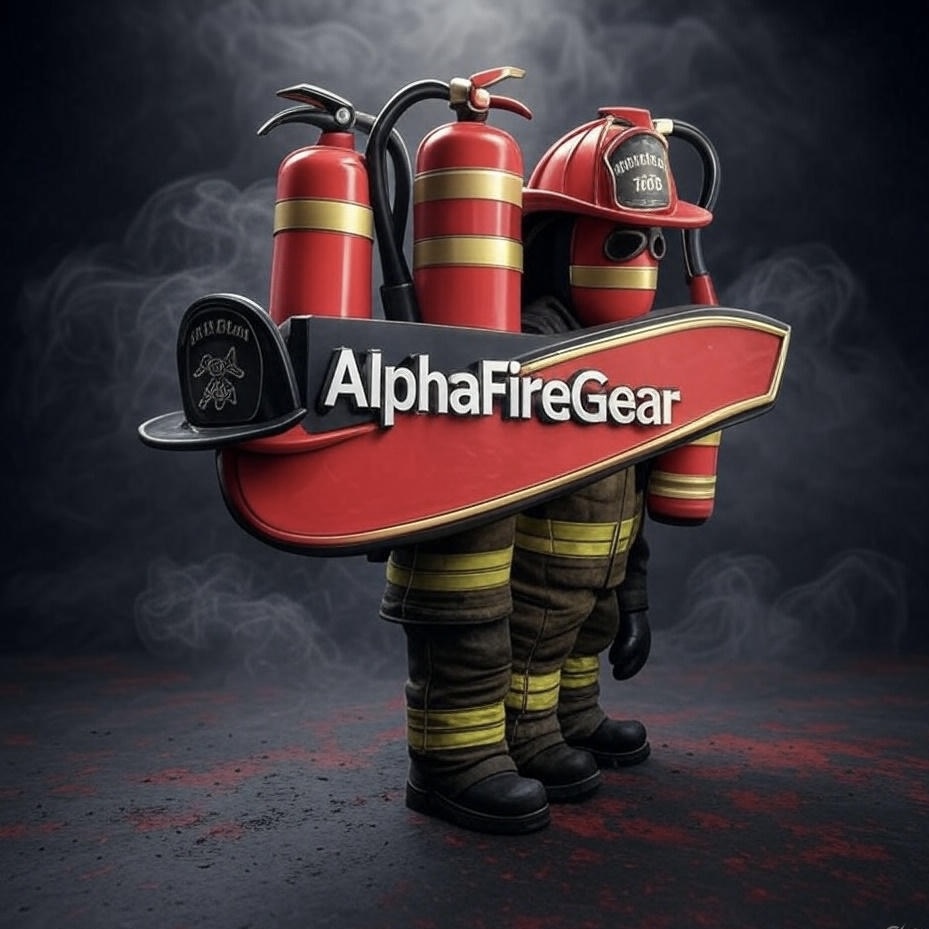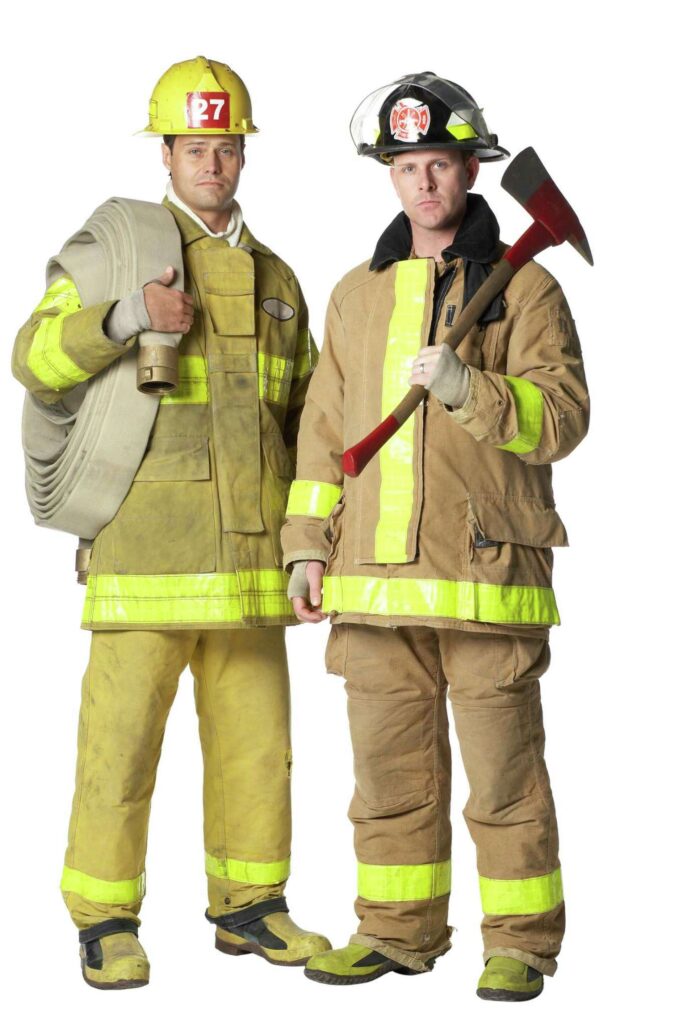Uncategorized
what do firemen wear
What Do Firefighters Wear? A Head-to-Toe Guide to Firefighter Gear
When you picture a firefighter, what do you see? Most of us immediately imagine a figure clad in heavy, durable gear, a helmet, and a mask. But have you ever wondered, exactly, what do firemen wear and why? That iconic outfit is far more than just a uniform—it’s a high-tech personal protective equipment (PPE) system designed to withstand extreme heat, flames, and hazardous conditions.
Whether you’re considering a career in firefighting, writing a school report, or just curious, this guide will break down every piece of equipment. We’ll explore the incredible technology that goes into each layer, explaining how it all works together to keep these everyday heroes safe. Let’s suit up and dive in!

The Foundation: Station Wear and Personal Protective Gear
Before they even reach the fire truck, firefighters have a base layer of clothing. This isn’t just a standard uniform; it’s the first part of their protective system.
Station Wear / Duty Uniform
This is the everyday uniform you might see firefighters wearing around the fire station. It typically consists of a durable, fire-resistant shirt and pants, often dark blue or black. These clothes are comfortable for daily tasks but are also designed to provide a basic level of protection from sparks and minor abrasions.
Curious about life at the station? Read our article on A Day in the Life of a Firefighter.
The Head-to-Toe Protection: Structural Turnout Gear
The iconic yellow or black coat and pants are officially known as structural turnout gear or a “bunker gear.” This is the primary defense against the extreme dangers of a fire. Modern turnout gear is a marvel of engineering, consisting of three main layers.
1. The Outer Shell
This is the visible layer you see. Made from rugged materials like Nomex or Kevlar, its job is to resist:
-
Flames: It’s inherently flame-resistant.
-
Abrasions: It can withstand scraping against rough surfaces like broken bricks or wood.
-
Water: It’s designed to be highly water-resistant.
2. The Moisture Barrier
Sandwiched in the middle, this critical layer is like a high-tech raincoat. It prevents water, steam, and hazardous chemicals from penetrating through to the firefighter’s skin while still allowing perspiration to escape (a concept called “breathability”).
3. The Thermal Liner
The innermost layer is all about heat insulation. It’s a thick, quilted material that traps air, creating a barrier against intense radiant heat and helping to maintain the firefighter’s core body temperature.
Protecting the Head, Hands, and Feet
The Fire Helmet: More Than Just a Hard Hat
The helmet is a symbol of the fire service for a reason. It’s a multi-purpose lifesaver.
-
Impact Protection: Shields the head from falling debris.
-
Heat Resistance: Designed to withstand high temperatures.
-
Face Shield/Eye Protection: A flip-down shield protects eyes from heat, sparks, and debris. Some helmets also feature protective goggles that can be worn for extra safety.
-
Attachment Point: Flashlights, thermal imaging cameras, and firefighter helmet lights can be mounted directly to the helmet, keeping hands free.
-
Dive deeper into the history and technology in our complete guide to Choosing the Right Fire Helmet at alphafiregear.com
Firefighting Gloves
A firefighter’s hands are their most important tools, so their gloves are incredibly robust. They are heavily insulated and made of materials that resist heat, cuts, and punctures, allowing for dexterity while offering maximum protection.
Firefighting Boots
These are no ordinary work boots! They are tall, waterproof, and have steel toes and shanks to protect feet from sharp objects and crushing weights. The soles are designed to be slip-resistant and highly durable.
The Lifesaving System: SCBA (Self-Contained Breathing Apparatus)
When you see a firefighter wearing a face mask, it’s part of the SCBA. This is arguably the most critical piece of equipment for entering a burning building.
-
The Cylinder: The “air pack” on their back holds 30-60 minutes of breathable air.
-
The Regulator: This device controls the flow of air from the cylinder.
-
The Facepiece: The mask creates a secure seal around the face, ensuring the firefighter only breathes clean, filtered air, protecting them from toxic smoke and superheated gases.
-
For detailed technical standards, the National Fire Protection Association (NFPA) sets the guidelines for all this equipment. You can learn more on the NFPA website.
Specialized Gear for Special Situations
Firefighters do more than just fight fires. Their gear changes based on the emergency.
-
Wildland Gear: For forest fires, firefighters wear lighter, more breathable gear that offers protection from flames but allows for greater mobility over long distances.
-
Hazardous Materials (Hazmat) Suits: For chemical spills, they wear fully encapsulated, airtight suits that provide the highest level of protection from dangerous substances.
-
Technical Rescue Equipment: For water rescues, collapse scenarios, or rope work, they wear harnesses, life jackets, and helmets specific to those tasks.
Frequently Asked Questions (FAQs)
Q1: How much does a full set of firefighter gear weigh?
A full set of structural turnout gear, including the SCBA, helmet, and tools, can weigh between 45 and 75 pounds. That’s like carrying a large bag of concrete on your back while working in extreme conditions!
Q2: Why is firefighter gear often yellow or black?
While tradition plays a part (leather helmets were originally black), high-visibility colors like yellow and lime green help firefighters see each other in dense smoke. Black gear is also common and is made from materials that are naturally that color.
Q3: How do firefighters stay cool in all that heavy gear?
It’s a huge challenge! The gear is designed to be as breathable as possible, but firefighters rely on rigorous physical training, hydration, and rotating teams (“rehab”) to avoid heat exhaustion and heat stroke.
Q4: Can firefighter gear melt?
Yes, even the best gear has its limits. While it’s designed to be highly flame-resistant, prolonged exposure to extreme temperatures or direct flame impingement can cause it to break down, which is why firefighting tactics emphasize rapid intervention and crew safety.
Q5: What’s the difference between “turnout gear” and “bunker gear”?
There’s no real difference! The terms are used interchangeably. “Turnout” comes from the idea of “turning out” to a call, while “bunker” refers to the days when gear was stored in the bunkroom.
Conclusion: A Suit of Armor for Modern Heroes
The next time you see a firefighter in full gear, you’ll know that every piece, from their protective helmet to their heavy boots, has a life-saving purpose. It’s a sophisticated suit of armor that combines tradition with cutting-edge technology, allowing them to run toward dangers the rest of us run from.

